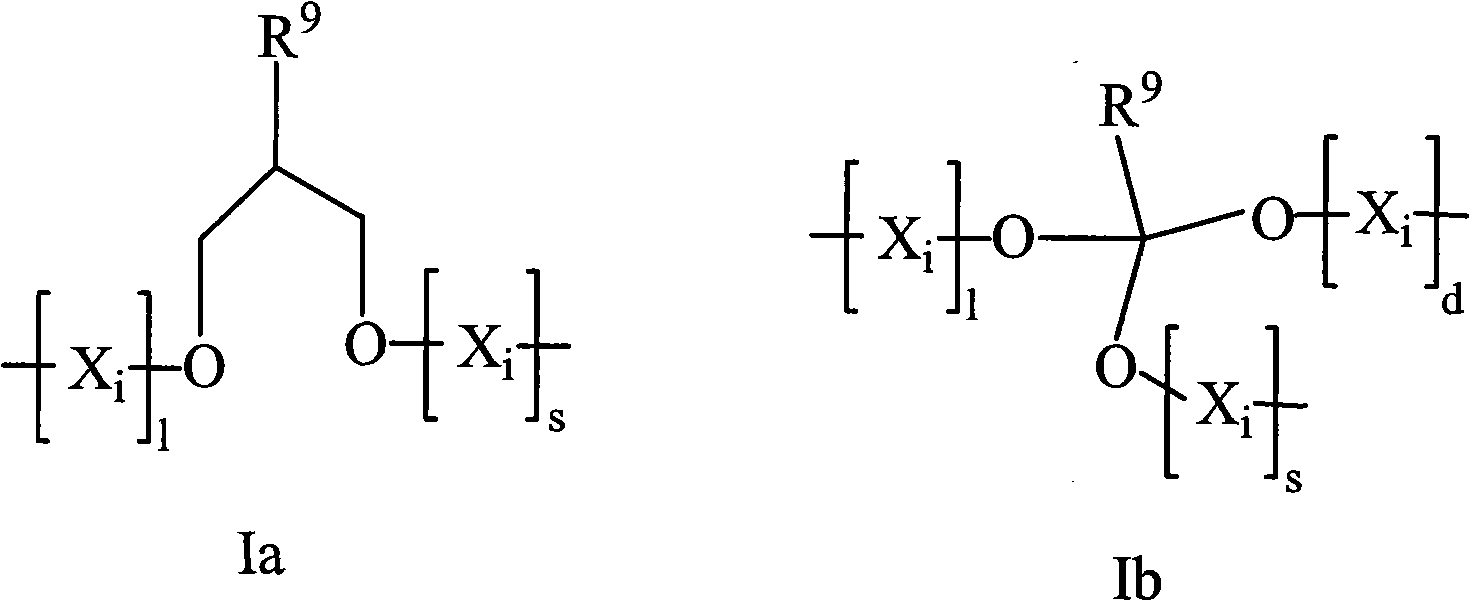Alkali-soluble hyperbranched photosensitive organic silicon prepolymer and preparation method thereof
An organosilicon, alkali-soluble technology, applied in the field of photosensitive organosilicon prepolymer and its preparation, alkali-soluble hyperbranched photosensitive organosilicon prepolymer
- Summary
- Abstract
- Description
- Claims
- Application Information
AI Technical Summary
Problems solved by technology
Method used
Image
Examples
Embodiment 1
[0138] The synthesis of N,N-dihydroxyethyl-3-aminopropionic acid methyl ester monomer, the methyl acrylate 28.38g that adds the amount of equal substance and diethanolamine 34.65g in the four-neck flask that condenser tube and mechanical stirring are housed, 20 g methanol was used as solvent. mixture at room temperature and pass N 2 After stirring for 30 minutes under certain conditions, the temperature was raised to 40°C for 4 hours, and then distilled under reduced pressure to remove methanol to obtain a colorless and transparent N, N-dihydroxyethyl-3-aminopropionic acid methyl ester monomer. The reaction formula is as follows:
[0139]
Embodiment 2
[0141] Hexafunctional hydroxyl-terminated hyperbranched polyamine-ester (HBP 1 -OH) synthesis, add trimethylolpropane 1.34g, 3 times the molar amount of N,N-dihydroxyethyl-3-aminopropane in the four-necked flask connected with water separator, addition funnel and mechanical stirring 5.73 g of methyl ester and 0.07 g of p-toluenesulfonic acid. The mixture was heated to 120 ° C for 3 h to obtain a light yellow oily six-functional hydroxyl-terminated hyperbranched polyamine-ester (HBP 1 -OH), the equation is as follows:
[0142]
Embodiment 3
[0144] Twelve-functional hydroxyl-terminated hyperbranched polyamine-ester (HBP 2 -OH) synthesis, add trimethylolpropane 1.34g, 3 times the molar amount of N,N-dihydroxyethyl-3-aminopropane in the four-necked flask connected with water separator, addition funnel and mechanical stirring 5.73 g of methyl ester and 0.07 g of p-toluenesulfonic acid. The mixture was heated to 120°C for 3 hours, then, 11.46 g of N,N-dihydroxyethyl-3-aminopropionic acid methyl ester was added dropwise with 6 times the molar amount, and the temperature was raised to 130°C for 3 hours to obtain light yellow oily Twelve-functional hydroxyl-terminated hyperbranched polyamine-ester (HBP 2 -OH), the reaction formula is as follows:
[0145]
PUM
| Property | Measurement | Unit |
|---|---|---|
| Thickness | aaaaa | aaaaa |
| Viscosity | aaaaa | aaaaa |
Abstract
Description
Claims
Application Information
 Login to View More
Login to View More - R&D
- Intellectual Property
- Life Sciences
- Materials
- Tech Scout
- Unparalleled Data Quality
- Higher Quality Content
- 60% Fewer Hallucinations
Browse by: Latest US Patents, China's latest patents, Technical Efficacy Thesaurus, Application Domain, Technology Topic, Popular Technical Reports.
© 2025 PatSnap. All rights reserved.Legal|Privacy policy|Modern Slavery Act Transparency Statement|Sitemap|About US| Contact US: help@patsnap.com



